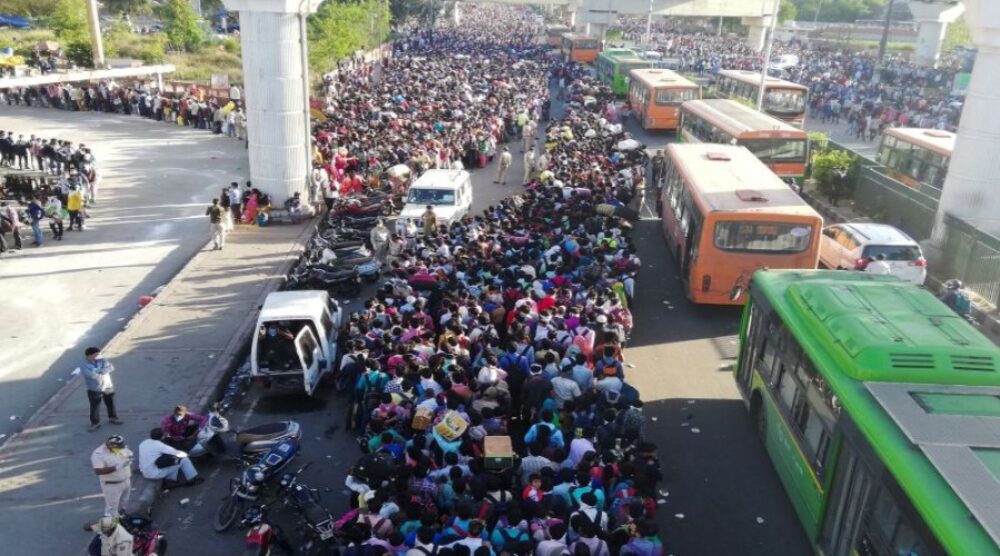Desperate migrant workers struggle to get home after India gets put into lock-down.
Prime Minister Modi announced a nation-wide lockdown on 25 March barely giving millions of Indians four hours to prepare for it. It turned out to be the strictest and world’s largest lock-down – which is not surprising given the size of India’s population (1.3 billion).
At least one Indian op-ed writer in a leading national newspaper was optimistic that the draconian measure might work. Writing a few days before the hastily announced lock-down, he observed:
The esteemed op-ed writer must have rued the words he wrote after the lock-down triggered panic-buying among those who could afford it and, even worse, a mass exodus of migrant workers from India’s mega-cities. Given that all forms of transport were also shut down, the enforced migration back to the villages often occurred on foot as struggling workers and their families – after having suddenly lost their livelihoods – sought the safety and sanctuary of family and friends – watch this video which depicts heart-wrenching scenes of migrants desperately seeking to return home. More than 20 migrants paid the ultimate price by dying during their perilous journey. This number is pretty close to the deaths recorded in India as a result of the coronavirus pandemic. Paradoxically, the mass exodus simply heightened the risk of community-level transmission of COVID-19.
Please click here to read the full “India goes into lock-down to fight COVID-19: Is the cure worse than the disease?” article published at Reflections on Government and Governance, written by Griffith Asia Institute Adjunct Professor, Yan Islam.








